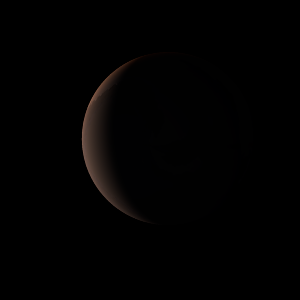|
|
Space Astro
|
Info for exoplanet "Erusi Ridur"
| Scientific (actual) data |
|---|
| Name | Kepler-1788 b |
| Planet status | Confirmed |
| Radius | 0.212197 |
| Orbital period | 2.80012 |
| Semi major axis | 0.0343 |
| Orbit eccentricity | 0 |
| Inclination | 86.54 |
| Discovered | 2017 |
| Updated | 2024-06-12 |
| Tzero tr | 2454960 |
| Impact parameter | 0.806 |
| Temperature (kelvin) | 956 |
| Publication | Announced on a website |
| Detection type | Primary Transit |
| Radius measurement type | Primary Transit |
| Alternate names | KOI-2060 b, KOI-2060.01 |
| Star name | Kepler-1788 |
| Right ascension | 291.22° |
| Declination | 45.78° |
| Mag v | 15.484 |
| Mag i | 14.859 |
| Mag j | 13.657 |
| Mag h | 13.127 |
| Mag k | 12.985 |
| Star distance | 560.445 |
| Star metallicity | -0.2 |
| Star mass | 0.74 |
| Star radius | 0.756 |
| Star sp type | K4V |
| Star age | 13.8 |
| Star temperature | 4670 |
| Star alternate names | 9279354, KOI-2060 |
| Wikipedia article | Kepler-1788 b |
Back
| |
| Fictional info (?) |
|---|
| Suggested name | Erusi Ridur |
| Planet type | Hot planet |
| It has the longest rotation period (445 days) of any planet in its solar system and rotates in the opposite direction to most other planets.
The carbon dioxide has probably photodissociated, and the free oxygen has been swept into interplanetary space by the solar wind because of the lack of a planetary magnetic field.
This pleasant place is said to have friendly poisonous herbivores, the "Noweva Cot", which feed by consuming something called Bora Myno'j. They are believed to be related to Worenyme, have wings and vary in size from 40 to 80 cm. The Noweva Cot are able to withstand temperatures from 150 to 180°C and even near-vacuum. |
| Estimated population | 0.0016 |
| Atmosphere | Oxygen | 85% |
| Water | 11% |
| Carbon dioxide | 3.5% |
| Methane | 0.00026% |
| Atmospheric pressure | 0.001 bar |
 |
| Moon | Onepi | Huge potato shaped ice asteroid |
| Nywiqik | Huge round rocky comet |
| Google search for Erusi ridur |
|
Website by Joachim Michaelis
|
|
|
|